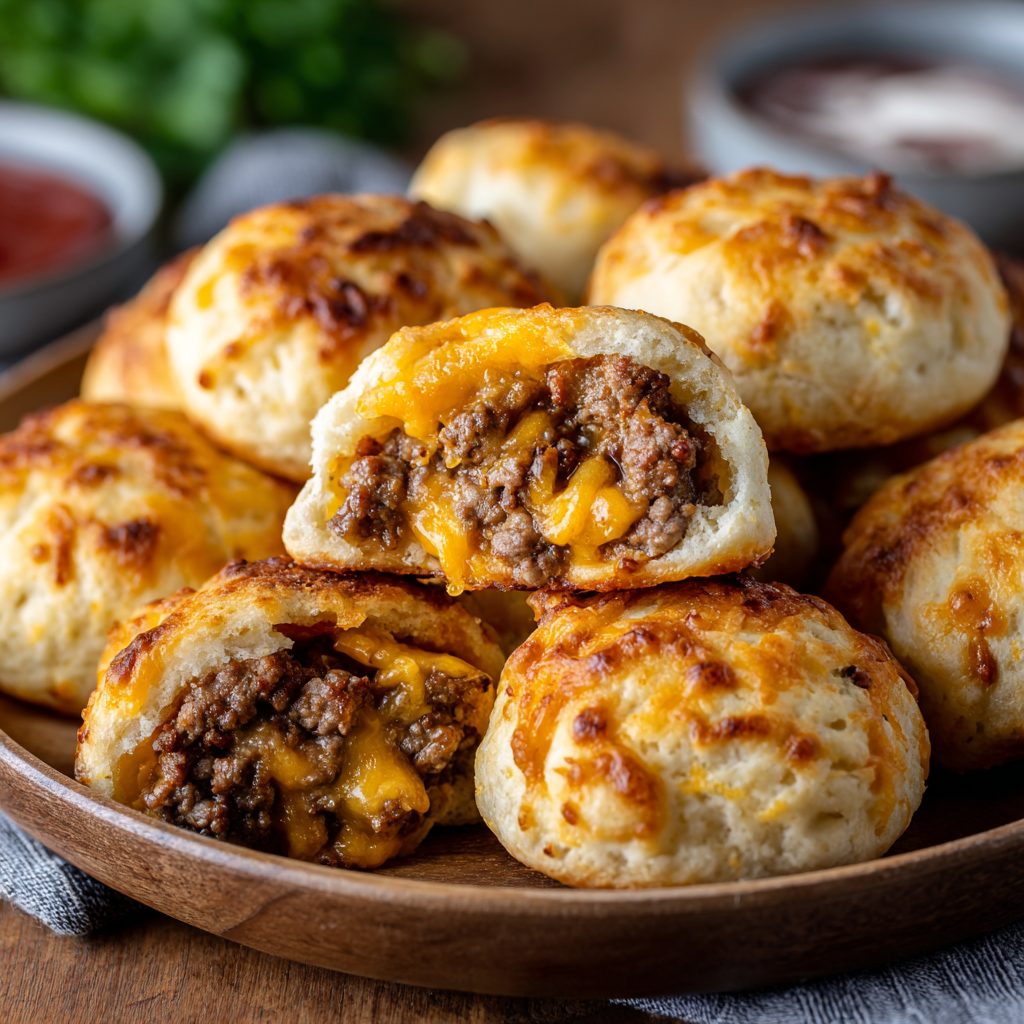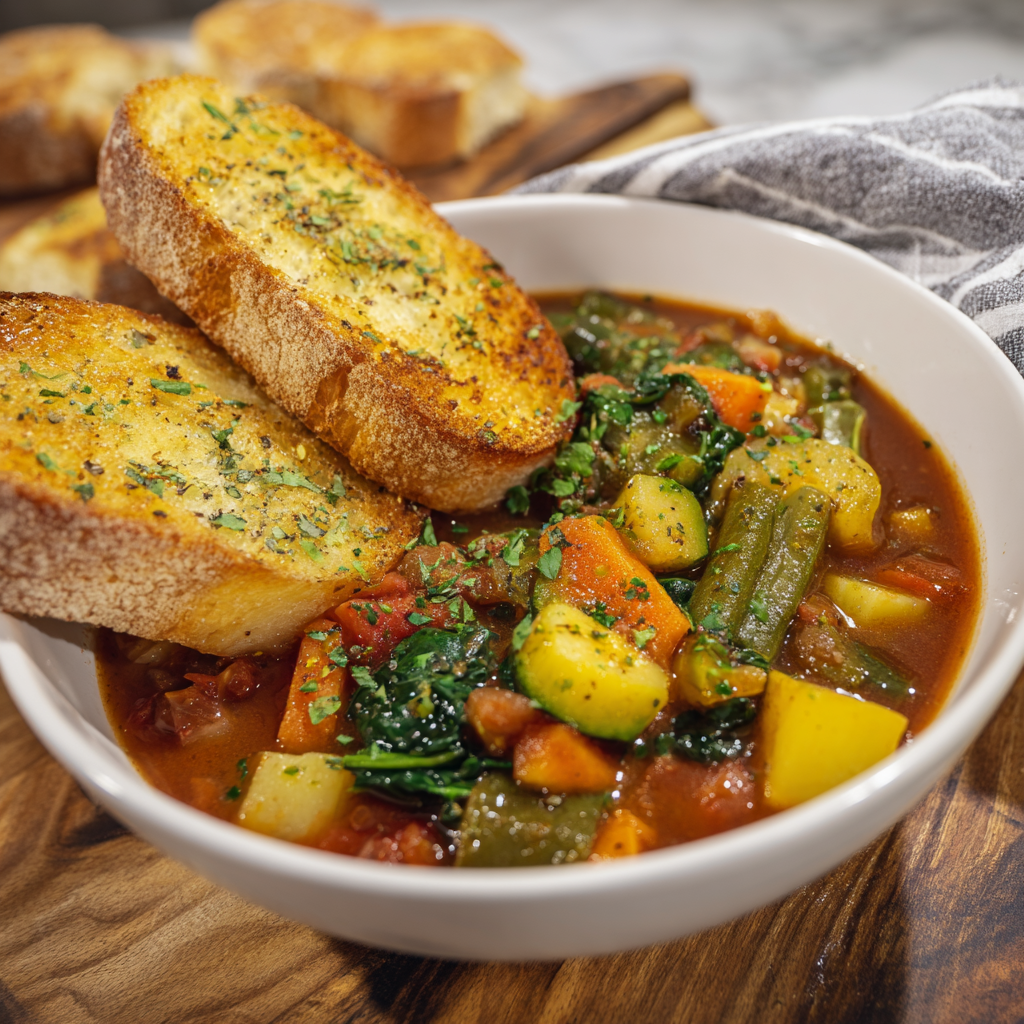Let’s Make Some Magic in a Bowl!
Hey there, friend! Come on in, pull up a stool, and let’s get something sizzling. Is there anything better than the smell of garlic, ginger, and sesame oil hitting a hot pan? I’m pretty sure it’s one of the top ten best smells in the entire world. It’s the kind of aroma that makes everyone in the house suddenly appear in the kitchen, asking “what’s for dinner?” with hopeful, hungry eyes.
Today, we’re whipping up one of my all-time favorite, feel-good meals: Korean Bulgogi Beef Bowls. If you’ve never had bulgogi, you are in for a serious treat. It literally translates to “fire meat,” but don’t worry—it’s not about heat, it’s about that incredible, caramelized, sweet-and-savory flavor that comes from a simple but powerful marinade. We’re taking thinly sliced beef, letting it soak up all that goodness, and then flash-cooking it so it’s tender, juicy, and packed with flavor.
The best part? We’re building a bowl. And I am a firm believer that food just tastes better when it’s in a bowl. We’re piling that glorious beef on a bed of fluffy rice, adding a big scoop of tangy, crunchy kimchi, and finishing it with all the fresh, crisp veggies we can get our hands on. It’s a perfect, balanced, and utterly crave-worthy meal that comes together faster than you can decide what to stream tonight. So, tie on your favorite apron (the messy one with stories to tell), and let’s make a weeknight dinner that feels like a celebration.
The Night I Fell in Love with Bulgogi
My love affair with bulgogi started not in a fancy restaurant, but in a cramped, steamy, incredibly loud food hall in Seoul. I was traveling with my best friend, and after a long day of getting gloriously lost on subways and exploring bustling markets, we were starving. We pointed at something that looked amazing at a busy stall, paid with a handful of won, and were handed two overflowing, steaming-hot bowls.
I took that first bite and my eyes just went wide. The beef was so tender it practically melted, the rice was the perfect neutral canvas, and the kimchi provided this shocking, delightful punch of tangy heat. We stood there at a tiny counter, shoulder-to-shoulder with strangers, not saying a word because our mouths were too busy being happy. It was one of those pure, joyful food moments that just sticks with you. I came home obsessed with recreating that magic, and after many, many (very delicious) attempts, this recipe is my love letter to that perfect food hall bowl. It’s my go-to meal for impressing friends, for cozy nights in, and for whenever I need a quick trip back to that happy, hungry memory.
Gathering Your Bowl-Building Crew
Here’s your shopping list for flavor town! The beauty of this recipe is in its balance—sweet, salty, tangy, fresh, and crunchy. Don’t be intimidated by the list; most of this is probably already in your pantry.
For the Bulgogi Beef:
- 1 lb thinly sliced ribeye or sirloin: This is KEY. You want it paper-thin so it cooks in a flash and soaks up the marinade like a dream. Chef’s Tip: Ask your butcher to slice it for you, or pop a slightly frozen steak into the freezer for 30 minutes—it will slice much more easily!
- 1/4 cup soy sauce: The salty, umami backbone of our marinade. For a gluten-free version, tamari or coconut aminos work perfectly.
- 2 tbsp brown sugar: Adds that deep, caramelized sweetness that defines bulgogi. Honey or maple syrup are great substitutes in a pinch.
- 2 tbsp sesame oil: Provides that nutty, toasty aroma that is unmistakably Korean. Don’t substitute this with another oil; the flavor is essential!
- 2 tbsp rice vinegar or mirin: A little acid to balance the sweetness and tenderize the meat. Mirin (a sweet rice wine) will add a subtle extra sweetness.
- 2 cloves garlic, minced: Because what’s a good marinade without garlic?
- 1 tsp grated ginger: Fresh is best! It adds a warm, zesty kick that wakes up the whole dish.
- 1/2 small onion, grated or minced: This is a sneaky chef hack! Grating the onion creates a natural paste that helps the marinade cling to the beef and adds a ton of flavor.
- 1 tsp sesame seeds: For a little texture and nutty flavor in the marinade itself.
- Pinch of black pepper: A simple finish to round it all out.
For the Bowls:
- 2 cups cooked white rice: Short-grain sushi rice is my favorite for its sticky, chewy texture, but jasmine or basmati work great too.
- 1 cup kimchi: The tangy, fermented, spicy heart of the bowl. It adds probiotics and a major flavor punch. Find it in the refrigerated section of most grocery stores now!
- 1 carrot, julienned: For a sweet, crunchy pop of color. A peeler makes quick work of this.
- 1 cucumber, thinly sliced: Adds a cool, fresh crunch that contrasts beautifully with the warm beef.
- 2 green onions, sliced: The perfect, sharp, fresh garnish.
- Optional toppings: A runny fried egg on top is a non-negotiable for me! A drizzle of gochujang (Korean chili paste) for more heat, and extra sesame seeds for garnish.
Let’s Get Cooking: Building Your Bulgogi Masterpiece
This process is fast and furious, so it’s best to have all your components prepped and ready to go. Let’s dance!
- Marinate the Beef: In a medium bowl, whisk together the soy sauce, brown sugar, sesame oil, rice vinegar, garlic, ginger, grated onion, sesame seeds, and black pepper. It should smell absolutely incredible already. Add your thinly sliced beef to the bowl and use your hands (the best tools!) to toss everything together, ensuring every single piece of beef is lovingly coated. Cover the bowl and let it hang out in the fridge for at least 30 minutes. If you can plan ahead, letting it marinate overnight will make the flavor even more profound. Chef’s Hack: No time to marinate? Even 15 minutes will do in a pinch! The grated onion acts as a quick tenderizer.
- Cook the Beef: Heat a large skillet, wok, or cast-iron pan over high heat. You want it screaming hot. Using tongs, add the beef in a single layer, shaking off excess marinade. WORK IN BATCHES! This is the most important step. If you crowd the pan, the beef will steam instead of getting that beautiful, caramelized sear. Cook for just 2-3 minutes per batch, flipping once, until the edges are slightly crispy and the marinade has created a gorgeous, glazy coating on the meat. Transfer each batch to a clean plate. Chef’s Tip: Don’t discard that marinade left in the bowl! Once all your beef is cooked, you can pour the remaining marinade into the hot pan and let it boil for a full minute to cook off any raw meat germs. It will reduce into a fantastic, thick glaze to drizzle over your finished bowls.
- Assemble the Bowls: This is the fun part! Divide your fluffy white rice among four bowls. Top each with a generous portion of the sizzling hot bulgogi beef. Artfully (or just enthusiastically) arrange your kimchi, julienned carrot, and sliced cucumber around the edges. The more color, the better!
- The Finishing Touches: Scatter sliced green onions and a sprinkle of sesame seeds over everything. If you’re feeling fancy, slide a perfectly fried egg with a runny yolk on top of each bowl. For a kick of heat, add a dollop of gochujang or a drizzle of sriracha. Serve immediately and watch everyone’s face light up.
How to Serve Your Culinary Creation
Presentation is part of the fun! I love using wide, shallow bowls so you can see all the beautiful layers of ingredients. Serve the bowls immediately while the beef is still hot and sizzling. This is a hands-on, interactive meal—encourage everyone to mix everything together right in their bowl, breaking the egg yolk and letting it coat the rice and beef. It’s a beautiful, delicious mess. For a true Korean BBQ experience at home, serve with a few extra sides like steamed edamame or a simple green salad with a ginger-soy dressing.
Make It Your Own: Delicious Twists & Swaps
The bowl is your canvas! Get creative and adapt it to what you love or what you have on hand.
- Chicken or Pork Bulgogi: Thinly sliced chicken breast or thigh, or even pork tenderloin, work wonderfully with this marinade. Just ensure it’s cooked through.
- Vegetarian Power Bowl: Swap the beef for extra-firm tofu (pressed and cubed), thick slices of king oyster mushroom, or even chickpeas. Marinate for the same amount of time.
- Low-Carb / Keto: Ditch the rice and serve your bulgogi over cauliflower rice, a bed of leafy greens, or even zucchini noodles.
- Different Veggies: Try quick-pickled radishes, sliced bell peppers, blanched spinach, or shredded red cabbage for different colors and textures.
- Spice Level: Control the heat! Add a teaspoon of gochujang to the marinade for a spicy kick, or serve it on the side for people to add themselves.
From My Kitchen to Yours: A Few Extra Thoughts
This recipe has evolved so much since my first attempt, which involved me accidentally using smoked sesame oil (a very strong, distinct flavor that is NOT what you want here!) and cutting the meat way too thick. We live and we learn! The beauty of cooking is that even the “mistakes” are usually still pretty tasty.
Over time, I’ve learned that the grating the onion is the real game-changer. It makes the marinade clingier and adds a subtle sweetness that you just don’t get from diced onion. I also used to be afraid of cooking on high heat, but for this dish, you HAVE to embrace the sizzle. That high heat is what gives you the signature caramelization without toughening up the meat.
This is my ultimate “I have people coming over and no time to cook” meal. It feels special and involved, but the active work is done in less than 20 minutes. The marinade does all the heavy lifting for you. So don’t stress, have fun with it, and know that you’re about to make something truly fantastic.
Your Questions, Answered!
Q: My beef turned out tough. What did I do wrong?
A: The two most common culprits are the cut of meat and the cooking time. First, ensure your beef is sliced paper-thin. Thicker pieces will be chewier. Second, do NOT overcook it! It needs just 2-3 minutes in a very hot pan. If you cook it too long, it will quickly go from tender to tough.
Q: I can’t find kimchi. Is there a substitute?
A: While kimchi adds a unique fermented tang, in a pinch you can use a quick pickle! Thinly slice some cabbage or radishes and toss them with a splash of rice vinegar, a pinch of sugar, and a dash of red pepper flakes. Let it sit for 15 minutes for a crunchy, tangy topping.
Q: Can I make this ahead of time?
A: Absolutely! The beef can be marinated for up to 24 hours, which actually makes the flavor even better. You can also cook the rice and prep all your veggies ahead of time. When you’re ready to eat, just quickly sear the beef and assemble your bowls.
Q: Is there a way to make this less sweet?
A: Of course! Taste your marinade before adding the beef. Start with 1 tablespoon of brown sugar instead of two. You can always add more, but you can’t take it out. Remember, the sugar is key for caramelization, but you can adjust it to your preference.

Korean Bulgogi Beef Bowls with Rice & Kimchi
- Total Time: 55 mins
Description
Get ready for sizzling flavor in every bite! Thinly sliced beef soaks up a sweet-savory marinade, then caramelizes in a hot pan for that irresistible bulgogi magic. Layer it over fluffy rice, add crunchy veggies, tangy kimchi, and a runny fried egg if you’re feeling extra. This is comfort food in a bowl—fast, balanced, and guaranteed to wow.
Ingredients
For the Beef:
-
1 lb ribeye or sirloin, thinly sliced
-
¼ cup soy sauce (or tamari)
-
2 tbsp brown sugar
-
2 tbsp sesame oil
-
2 tbsp rice vinegar or mirin
-
2 garlic cloves, minced
-
1 tsp grated fresh ginger
-
½ small onion, grated
-
1 tsp sesame seeds
-
Black pepper to taste
For the Bowls:
-
2 cups cooked white rice
-
1 cup kimchi
-
1 carrot, julienned
-
1 cucumber, thinly sliced
-
2 green onions, sliced
-
Optional: fried egg, gochujang, extra sesame seeds
Instructions
-
Marinate Beef – Mix soy sauce, sugar, sesame oil, vinegar, garlic, ginger, onion, sesame seeds & pepper. Add beef, toss well, marinate 30 min (up to overnight).
-
Cook Beef – Heat pan/wok on high. Cook beef in small batches, 2–3 min, until caramelized. Optional: reduce leftover marinade into a glaze.
-
Assemble Bowls – Divide rice into 4 bowls. Top with bulgogi, kimchi, carrot, cucumber, and green onion.
-
Finish & Serve – Garnish with sesame seeds, fried egg, or drizzle of gochujang for heat. Serve hot!
Notes
-
Slice beef extra thin for tenderness. Slightly freezing it helps.
-
Don’t overcrowd the pan—batch cooking keeps that caramelization perfect.
-
Make it vegetarian: swap beef for tofu or mushrooms.
- Prep Time: 15 min (plus 30 min marinating)
- Cook Time: 10 min
Nutrition
- Calories: 460 cal Per bowl
- Fat: 20g
- Carbohydrates: 38g
- Protein: 28g
Nutritional Information*
*This is an estimate for 1 bowl (including rice and standard veggies) without a fried egg or extra sauce. Values can vary based on specific ingredients used.
Calories: ~460 | Protein: 28g | Carbs: 38g | Fat: 20g | Fiber: 3g
Final Thoughts
From the bustling food halls of Seoul to the warmth of your own kitchen, the journey of bulgogi is one of powerful aroma, vibrant flavor, and shared joy. This dish is more than just a recipe; it’s an experience. It’s the anticipatory sizzle as the beef hits the scorching pan, the colorful artistry of assembling the bowl, and the quiet, happy moment of that first perfect bite where every component comes together in harmony.






